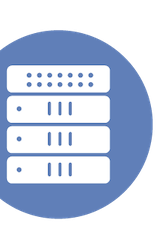Tech Field Day Coverage
Our delegate panel includes independent writers and thought leaders, and we collect their coverage of the event, Tech Field Day presentations, and sponsoring companies here.
GKE Autopilot for a Completely Hands-Free Kubernetes Experience with Google Cloud
Sulagna Saha recently highlighted Google Cloud’s GKE Autopilot at following their Cloud Field Day appearance, showcasing its capabilities in delivering a hands-free Kubernetes management experience. This advanced managed service reduces the operational complexity traditionally associated with Kubernetes by automating tasks like node management, upgrades, and repairs, making it more accessible for organizations with limited IT resources. Google’s approach supports scalability and a secure multicloud environment, emphasizing a shared responsibility model, which simplifies the adoption of cutting-edge technologies. Read more Cloud Field Day coverage at Gestalt IT!
Read More:
GKE Autopilot for a Completely Hands-Free Kubernetes Experience with Google Cloud
Nature Fresh Farms Leverages Intel and AI to Maximize Yield
At Nature Fresh Farms, leveraging Intel technology and advanced AI capabilities has significantly enhanced agricultural operations and maximized crop yields. Through the strategic use of data analytics and machine learning, the company is able to predict crop growth patterns, optimize greenhouse conditions, and reduce waste while increasing production efficiency. This innovative integration exemplifies how cutting-edge technology is transforming the farming industry, leading to more sustainable practices and improved outcomes. Read more in this Gestalt IT article by Girard Kavelines, sponsored by Intel and focused on their AI Field Day 4 presentations.
Read More:
Nature Fresh Farms Leverages Intel and AI to Maximize Yield
Cisco Redefines the Scope of Automation with Crosswork Solutions
Cisco is pushing the boundaries of network management with its innovative Crosswork solutions, emphasizing a holistic and scalable approach to automation across its entire networking portfolio. The Crosswork suite is designed to enhance operational efficiency, improve network visibility, and reduce complexities through sophisticated data analytics and machine learning capabilities. This strategic shift not only responds to the growing demands for more agile and resilient networks but also aligns with modern IT infrastructures’ need for automation to handle increasingly complex tasks. Read more coverage of Cisco Live by Sulagna Saha at Gestalt IT.
Read More:
Cisco Redefines the Scope of Automation with Crosswork Solutions
Running Enterprise Industry Specific Private AI with Intel, and VMware by Broadcom
Discover the impact of merging AI with industry-specific solutions in a recent exploration by Broadcom, where they teamed up with Intel and VMware to enhance enterprise operations. This initiative focuses on utilizing private AI infrastructure to drive efficiency and innovation, addressing unique industry challenges while maintaining data privacy and security. Learn more in this Gestalt IT article by Liselotte Foverskov, sponsored by Intel and focused on their presentation at AI Field Day 4.
Read More:
Running Enterprise Industry Specific Private AI with Intel, and VMware by Broadcom
Networking Field Day 35 Pt2
During Networking Field Day 35, industry leaders and technical experts come together to discuss the latest trends and innovations in networking, such as advancements in SD-WAN, 5G, and cloud networking. In this LinkedIn Pulse article, Michael Wynston discusses the cPacket and Selector AI presentations.
Read More:
Cisco Shifts Direction with SD-WAN for Industrial IoT
Cisco is making significant strides in the Industrial IoT space with its latest directional shift toward SD-WAN technologies. This new strategy enhances connectivity and security for industrial environments, aligning with modern demands for robust, scalable network infrastructure. Writing for Gestalt IT, Sulagna Saha provides an in-depth analysis of how Cisco’s SD-WAN solutions are set to transform IoT deployments in industrial settings following their presentation at Cisco Live.
Read More:
Cisco Shifts Direction with SD-WAN for Industrial IoT
Hedgehog – A Low-Tech Network Fabric for the Hybrid and Distributed Cloud
In this Gestalt IT article, Sulagna Saha explores Hedgehog, an innovative network fabric solution tailored for hybrid and distributed cloud environments. Hedgehog offers a simplified, low-tech approach to networking, aiming to enhance connectivity and security across diverse cloud infrastructures. This solution represents a significant shift towards streamlining cloud network management, ensuring efficiency and scalability for enterprise systems. Read more Networking Field Day 35 coverage at Gestalt IT.
Read More:
Hedgehog - A Low-Tech Network Fabric for the Hybrid and Distributed Cloud
Morpheus Unified Management for Multi-Cloud Platform Choice
Alastair Cooke, writing for The Futurum Group, discusses the Morpheus Data presentation at Cloud Field Day 20. Morpheus offers a unified management solution that simplifies the complexities of handling multiple cloud platforms. Its comprehensive approach empowers businesses to seamlessly manage applications, orchestrate containers, and automate workflows across diverse cloud environments. This capability significantly enhances operational efficiency, ensuring that organizations can leverage the flexibility of multi-cloud strategies without compromising on performance or security.
Read More:
Morpheus Unified Management for Multi-Cloud Platform Choice
Networking Field Day 35 Newbie Pt.1
Michael Wynston shares his experience as a first-time delegate at Networking Field Day 35, discussing the deep dive into advanced networking technologies and trends featured during the sessions. He highlights the unique opportunity to engage directly with innovative vendors and thought leaders which enhanced his understanding of the current and future landscape of network technology. Wynston focuses on the presentations of Intel, Hedgehog, and Arrcus in this post.
Read More:
Networking Field Day 35 Newbie Pt.1
Intel – Is It an IPU or a DPU or What?
Ed Horley dives into the evolving lexicon of data processing units, probing Intel’s terminology around IPUs and DPUs. His article seeks to clarify the distinctions and overlaps between these emerging technologies that are integral to modern infrastructure design. Horley’s expert analysis is crucial for those in the tech industry looking to parse the nuances and understand the implications of Intel’s contributions to data center innovation. Read more in this article, sparked by Intel’s presentation at Networking Field Day 35.
Read More:
Intel - Is It an IPU or a DPU or What?
Ubiquiti Stealing the Show at MFD11
Mohammad Ali reacts to Ubiquiti’s presentation at Mobility Field Day 11, where they stood out with their product demonstrations and strategic announcements. The article highlights how Ubiquiti’s offerings captivated the audience, potentially indicating a shift in market dynamics within the wireless networking space. Their success at MFD11 demonstrates Ubiquiti’s strong market presence and commitment to innovation in the field of wireless communication.
Read More:
Ubiquiti Stealing the Show at MFD11
Morpheus Data Platform – Extensible to the Specific Demands of Every Multi-Cloud Enterprise
Sulagna Saha explores the versatility of the Morpheus Data Platform, emphasizing its adaptability in meeting the unique multi-cloud needs of diverse enterprises. The platform’s extensibility is showcased as a key strength, facilitating tailored integrations and workflows to streamline multi-cloud management and operations. With a focus on delivering specific solutions for complex cloud environments, Morpheus Data stands out as an innovative driver for enterprise IT efficiency and agility. Read more coverage of Cloud Field Day 20 on the Gestalt IT website!
Read More:
Morpheus Data Platform - Extensible to the Specific Demands of Every Multi-Cloud Enterprise
Google Cloud Re-Architects Infrastructure for AI Era
Allyson Klein provides insights into how Google Cloud is reshaping its infrastructure to support the surge in AI applications, catering to the needs of the next generation of computing. The article focuses on Google’s collaboration with Intel to optimize hardware and software stacks, ensuring they meet the performance and scalability requirements that AI-driven workloads demand. This re-architecting effort signifies a strategic pivot towards AI-readiness, reflecting Google Cloud’s commitment to empowering developers and enterprises with cutting-edge AI capabilities. Read more about Intel’s AI capabilities in this series of sponsored posts on Gestalt IT following AI Field Day 4.
Read More:
Google Cloud Re-Architects Infrastructure for AI Era
Mezmo Data Management, Observability and More
Paul Nashawaty recently caught up with Mezmo at AppDev Field Day, and this DevOps Dialogue offers insight into their data management and observability platform, emphasizing its strength in extracting actionable value from telemetry data. The discussion explores how Mezmo stands out in the crowded market of observability tools by not just collecting data but also by making it comprehensible and useful for businesses. Check out the Mezmo presentation from AppDev Field Day for more detail!
Read More:
Mezmo Data Management, Observability and More
Row-Scale On-Premises Cloud Infrastructure From Oxide Computer
Alastair Cooke at Futurum Research discusses Oxide Computer’s initiative to deliver row-scale, on-premises cloud infrastructure, addressing the growing demand for scalable and manageable IT resources within the enterprise. The article examines how Oxide’s innovative approach aims to combine the convenience and agility of the public cloud with the security and control of on-premises systems. Highlighting a shift in cloud computing, the analysis explores Oxide’s potential to redefine data center operations by offering a comprehensive, customer-centric solution. Read more Cloud Field Day 20 coverage at The Futurum Group!
Read More:
Row-Scale On-Premises Cloud Infrastructure From Oxide Computer
Unveiling the Role of CPUs in AI Inference and a Growing Trend of Accelerator Alternatives With Intel
In this Gestalt IT article, Colleen Coll considers Intel’s approach to AI inference, examining the evolving role of CPUs and the rising inclination towards specialized accelerator alternatives. Her write-up unveils how Intel is navigating this shift, focusing on optimizing CPUs for AI tasks while also embracing the potential of dedicated accelerators for more demanding workloads. The article highlights Intel’s strategic efforts to meet diverse AI computational needs, ensuring they remain at the forefront of high-performance AI innovation. This sponsored article follows Intel’s presentation at AI Field Day 4 earlier this year.
Read More:
Owning a Cloud Infrastructure on Premises, With Oxide
Sulagna Saha takes a look at how Oxide Computer Company is redefining the concept of on-premises cloud infrastructure by offering solutions that mirror the flexibility and efficiency of the public cloud. She explains Oxide’s vision to empower businesses with full ownership and control over their cloud environment without sacrificing the benefits of cloud-native services. The article highlights the potential shift in the industry as companies look towards on-premises clouds as a means to gain the advantages of cloud computing coupled with heightened security and autonomy. Read more Cloud Field Day 20 coverage at Gestalt IT!
Read More:
Owning a Cloud Infrastructure on Premises, With Oxide
Run Fly Visualize
The latest “Fudge Sunday” from Jay Cuthrell is focused on “Run Fly Visualize,” an exploration of the iterative process that drives technology initiatives from conception to deployment. He explains the cycle of running with an idea, soaring through its execution, and visualizing the outcomes to refine and innovate further. Cuthrell’s piece offers a metaphorical take on the dynamic nature of tech development, emphasizing the continuous improvement and creative persistence critical to success. This was inspired by the Tech Field Day presentations at Qlik Connect last month.
Read More:
Running Private AI Data Centers Gets Easy Like the Public Cloud With Juniper Networks
Sulagna Saha looks into how Juniper Networks is simplifying the operation of private AI data centers to parallel the ease of the public cloud. She discusses the advancements made by Juniper Networks in developing an accessible, streamlined environment for AI workloads that can seamlessly scale within private infrastructures. Her article underscores Juniper’s commitment to bridging the gap between private data center complexities and the user-friendly experience offered by the public cloud, paving the way for more efficient AI operations. Read more Cloud Field Day 20 coverage at Gestalt IT!
Read More:
Running Private AI Data Centers Gets Easy Like the Public Cloud With Juniper Networks
MorpheusData’s PlatformOps Automates IT
Peter Welcher explores the capabilities of Morpheus Data’s PlatformOps, highlighting this innovative solution as a significant force in IT automation. The article positions the platform as an enabler of simplified IT operations, integrating numerous services and systems into a cohesive, automated workflow. Welcher’s piece recognizes PlatformOps as a game changer for enterprises seeking to streamline their IT processes, achieve efficiency, and embrace a truly agile infrastructure model. Read more in this LinkedIn Pulse article following the Morpheus Data presentation at Cloud Field Day 20!
Read More:







